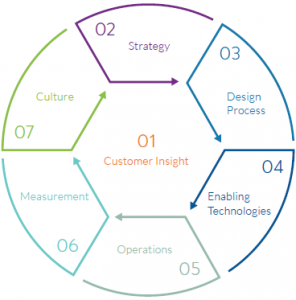The fourth of the seven customer experience (CX) dimensions discussed in Perficient Digital’s CX guide is Enabling Technologies. No matter how great your first three dimensions are (customer insight, strategy, and design process), without the right technology and surrounding business processes, you won’t be able to bring anything to life.
CX Technology Selection
Selecting the right technology solutions to enable your desired CX can be a daunting task. Finding solutions that enable your CX vision, working through integration issues, and justifying the expense are just a few of the complex issues that must be addressed. Fortunately, there are well-established reference architectures and methodologies to guide organizations through technology adoption.
A foundational element is to define business, functional, and technical capabilities that align with the most compelling CX. Modern systems are built for scale and ongoing ‘tweaking’ to keep you agile enough to meet the changing expectations of your customers.
The CX enabling technologies you select will need to:
- Deliver an outstanding CX across all customer channels/touchpoints and device types
- Efficiently manage content for multiple channels, including digital and physical, without extensive customization
- Optimize your efforts through real-time monitoring that enables rapid content changes
- Deliver highly relevant and personalized information, with behavior-based triggers
- Create and leverage rich customer profiles by integrating multiple data sources into a single view
- Meet all of your customers’ expectations when using a mobile device to engage with you
Best Practice: Ask the Right Questions
As a first step toward alignment of your CX strategy and the technology needed to enable it, you should discuss these five issues with your team for each customer group:
- How can we deliver a consistent experience across all channels/touchpoints?
- How can we improve the effectiveness of our content management?
- How can we boost the impact and ROI of our marketing campaigns?
- What is the best way for us to provide a more personalized experience?
- How can we consolidate all of our data so that we have a single view of the customer?
As a reminder from the previous posts in this series, in life sciences, “customer” can mean many different things (e.g., patient, physician, clinical site, clinical subject, research partner, regulatory agency, vendor, employee). When exploring the issues above, you might come up with different answers for different customer groups. You then have a choice as to whether the same technology suite can (and should) be used for ALL customer groups, or whether the individual groups have unique-enough needs to warrant separate solutions.
In the next post, I’ll discuss the fifth dimension of CX: Operations.

